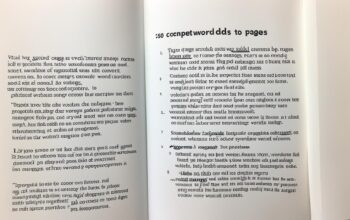Conclusions play a crucial role in any piece of writing as they provide closure, summarize main ideas, and leave a lasting impression on readers. When it comes to crafting a strong conclusion, there are several strategies and techniques that can be applied. Introductions and conclusions act as bookends for your content, so it’s important to invest time and effort in creating an effective conclusion.
In this article, we will explore tips and tricks for how to start a conclusion, ensuring that your final paragraphs are persuasive and impactful. We will delve into the functions of conclusions, strategies for writing them, and what to avoid. Whether you’re writing an essay, article, or report, these techniques for crafting strong conclusions can be applied to various forms of non-fiction writing.
Key Takeaways:
- Conclusions provide closure, summarize main ideas, and leave a lasting impression on readers.
- Crafting a strong conclusion requires strategies and techniques.
- Introductions and conclusions act as bookends for your content.
- Tips and tricks for writing effective conclusions can be applied to various forms of non-fiction writing.
- Invest time and effort in creating an impactful conclusion.
The Functions of Conclusions
Conclusions play a vital role in writing, serving several important functions. First and foremost, they bridge the gap between your content and the readers’ daily lives, helping them transition back and reflect on what they’ve read. A well-crafted conclusion has the power to provide closure and leave a lasting impact on readers, making it an essential component of any piece of writing.
In addition to closure, conclusions also provide you with the opportunity to have the final say on the issues you’ve raised in your paper. They allow you to synthesize your thoughts and demonstrate the importance of your ideas. By effectively summarizing and highlighting the key points of your content, conclusions reinforce your argument and solidify your message.
Moreover, conclusions enable you to go beyond the confines of the assignment or topic at hand. They offer a platform to consider broader implications of your work, propose further research, or present future possibilities. By thinking critically and taking a step back, conclusions allow you to present a bigger picture and invite readers to engage with your ideas on a deeper level.
Overall, the significance of conclusions cannot be overstated. They provide closure, summarize main ideas, and leave a lasting impression. Conclusions are not just a way to wrap up your writing neatly; they serve as a powerful tool to communicate your message effectively and make a lasting impact on your readers, ensuring your ideas resonate with them long after they’ve finished reading.
| Key Functions of Conclusions |
|---|
| Serve as a bridge between content and readers’ daily lives |
| Provide closure and leave a lasting impact |
| Demonstrate the importance of ideas |
| Offer an opportunity to consider broader implications |
Strategies for Writing Effective Conclusions
Writing an effective conclusion requires careful consideration and strategic thinking. By implementing certain strategies, you can ensure that your conclusion leaves a lasting impact on your readers. Below are some effective techniques to help you craft compelling conclusions:
- Engage in the “So What” Game: Challenge yourself or a friend to critically analyze your conclusion and its statements, asking why they are important. This exercise ensures that your conclusion goes beyond summarization and highlights the significance of your ideas.
- Revisit and Tie Together: Return to the themes or ideas presented in the introduction and connect them with your conclusion. By creating a sense of cohesion, you can reinforce the main points of your paper and provide a satisfying conclusion for your readers.
- Synthesize Instead of Summarize: Instead of merely summarizing your main points, aim to synthesize them. This involves bringing together different ideas and presenting them in a cohesive and thought-provoking manner, allowing your readers to see the bigger picture.
- Include Provocative Insights: To make your conclusion memorable, consider including a thought-provoking insight or quotation from your research. This can spark curiosity, stimulate further reflection, and leave a lasting impression on your audience.
- Propose a Course of Action: Depending on the nature of your writing, you may want to propose a course of action in your conclusion. Whether it’s a call to implement a solution or a suggestion for future research, offering concrete steps can make your conclusion feel impactful and actionable.
- Highlight Broader Implications: Take your conclusion beyond the scope of your immediate topic and explore broader implications. This can involve discussing the significance of your findings or considering how your work contributes to a larger body of knowledge.
- Avoid Common Pitfalls: Lastly, be mindful of common pitfalls that can weaken your conclusion. Avoid introducing new ideas or evidence, as this can leave your readers confused or undermine the clarity of your argument. Additionally, steer clear of ending abruptly without resolution or making sentimental appeals that rely on emotion rather than logical reasoning.
By implementing these strategies and avoiding common pitfalls, you can enhance the impact and effectiveness of your conclusions, leaving a strong impression on your readers.

What to Avoid in Conclusions
While it’s important to know what to do in a conclusion, it’s equally important to know what to avoid. By steering clear of common conclusion mistakes and pitfalls in writing conclusions, you can ensure that your final paragraphs are strong and effective.
One common mistake to avoid is using unnecessary phrases like “in conclusion” or “in summary”. These phrases come across as wooden and trite, adding little value to your conclusion. Instead, focus on delivering your final thoughts and leaving a lasting impression on your readers.
Another pitfall to avoid is introducing new ideas or evidence in the conclusion. Your conclusion should summarize the main points and arguments discussed in the body of your writing, rather than introducing fresh content. Introducing new ideas or evidence in the conclusion can confuse your readers and weaken the impact of your overall message.
Ending with a rephrased thesis statement, without any substantive changes, is another mistake to be mindful of. Your conclusion should go beyond restating your thesis and offer a final reflection on the main ideas and arguments presented in your writing. Use this opportunity to leave your readers with a thought-provoking insight or a call to action.
Making sentimental appeals in your conclusion is also a pitfall to be cautious of. While it’s important to create an emotional connection with your readers, relying solely on sentimentality can undermine the credibility of your conclusion. Instead, aim for a balanced approach that combines logical reasoning and emotional appeal.
By understanding these common conclusion mistakes and pitfalls, you can craft conclusions that are impactful, persuasive, and leave a lasting impression on your readers.
Different Types of Conclusions
When it comes to concluding your writing, there are various types of conclusions you can employ depending on your style and purpose. Understanding these different types can help you choose the most effective conclusion for your piece. Let’s explore a few examples:
1. Connecting your introduction and conclusion:
This type of conclusion circles back to the beginning of your piece to create a sense of completion. By referencing the main ideas or themes introduced in your introduction, you provide readers with a satisfying conclusion that ties everything together.
2. Providing the reader with something to think about:
Another approach is to leave the reader with a thought-provoking statement, quotation, question, or surprising twist. This type of conclusion engages the reader’s curiosity and encourages further reflection on the topic.
3. Summarizing with imagery or humor:
Using vivid imagery or injecting humor into your conclusion can be an effective way to leave a memorable impression on your readers. This approach can make your conclusion more engaging and help drive your main point home.
4. Providing useful observations or referring to the main argument succinctly:
Concluding with a concise summary or restating your main argument in a powerful way ensures that your readers leave with a clear understanding of your message. By highlighting the key takeaways of your writing, you reinforce the importance of your ideas.
By incorporating these different types of conclusions into your writing, you can create a strong and impactful ending that resonates with your readers.
Do’s and Don’ts of Writing Conclusions
When it comes to crafting a strong conclusion, following certain guidelines can make a significant difference. To ensure that your conclusions are impactful and leave a lasting impression on your readers, here are some do’s and don’ts to keep in mind.
Firstly, it is important to keep your conclusion short and concise. Summarize your main points effectively without repeating unnecessary details. Additionally, echoing the introduction in your conclusion helps maintain cohesion and creates a sense of completeness in your writing.
Another important aspect is providing new perspectives in your conclusion. Take the opportunity to offer fresh insights or propose further avenues of exploration. Moreover, consider adding a call to action to encourage readers to take the next step or think critically about the topic you’ve discussed.
On the other hand, there are certain things to avoid in conclusion writing. Avoid introducing new ideas or evidence that haven’t been discussed in the body of your work. Similarly, simply rehashing the introduction without adding any new information can be unproductive. It’s also advisable to steer clear of filler words, absolute claims, and abrupt style switches. Finally, make sure to avoid ending abruptly without providing a resolution or closure to your readers.
FAQ
How do I start a conclusion?
There are several ways to start a conclusion effectively. You can summarize the main points of your essay or article, reiterate your thesis statement, provide a thought-provoking quotation, or propose a course of action. The key is to leave a lasting impression on readers while tying together the main ideas discussed in your writing.
What is the function of a conclusion in writing?
Conclusions serve multiple functions in writing. They provide closure to your piece, summarize the key points, leave a lasting impact on readers, synthesize your thoughts, and demonstrate the importance of your ideas. Additionally, conclusions allow you to consider broader implications or propose further research related to your topic.
What strategies can I use to write an effective conclusion?
There are several strategies you can employ to write an effective conclusion. One approach is to play the “So What” game, where you explain why your conclusion and its statements are important. Another strategy is to circle back to the themes or ideas introduced in the introduction and tie them together in the conclusion. You can also synthesize the main points of your paper instead of simply summarizing them, include a provocative insight or quotation, or propose a course of action.
What should I avoid in a conclusion?
When writing conclusions, it’s best to steer clear of certain mistakes. Avoid using unnecessary phrases like “in conclusion” or “in summary,” as they can come across as wooden and trite. Introducing new ideas or evidence in the conclusion should also be avoided. Ending with a rephrased thesis statement without any substantive changes or making sentimental appeals are other pitfalls to be mindful of.
What are the different types of conclusions?
There are various types of conclusions that can be used depending on the style and purpose of your writing. One type is the “Connecting your introduction and conclusion,” where you circle back to the beginning to create a sense of completion. Another type is providing the reader with something to think about, such as a quotation, question, or surprising twist. Summarizing with imagery or humor is another approach that can be effective. Providing useful observations or referring to the main argument succinctly are also valuable techniques.
What are the do’s and don’ts of writing conclusions?
To write effective conclusions, it’s important to follow certain guidelines. Some do’s include keeping the conclusion short and concise, echoing the introduction for cohesion, providing new perspectives, adding a call to action, and maintaining a consistent tone. On the other hand, common don’ts include introducing new ideas or evidence, simply restating the introduction, using filler words or making absolute claims, abruptly switching styles, and ending abruptly without resolution. By adhering to these do’s and don’ts, you can ensure that your conclusions are impactful and leave a lasting impression on your readers.







